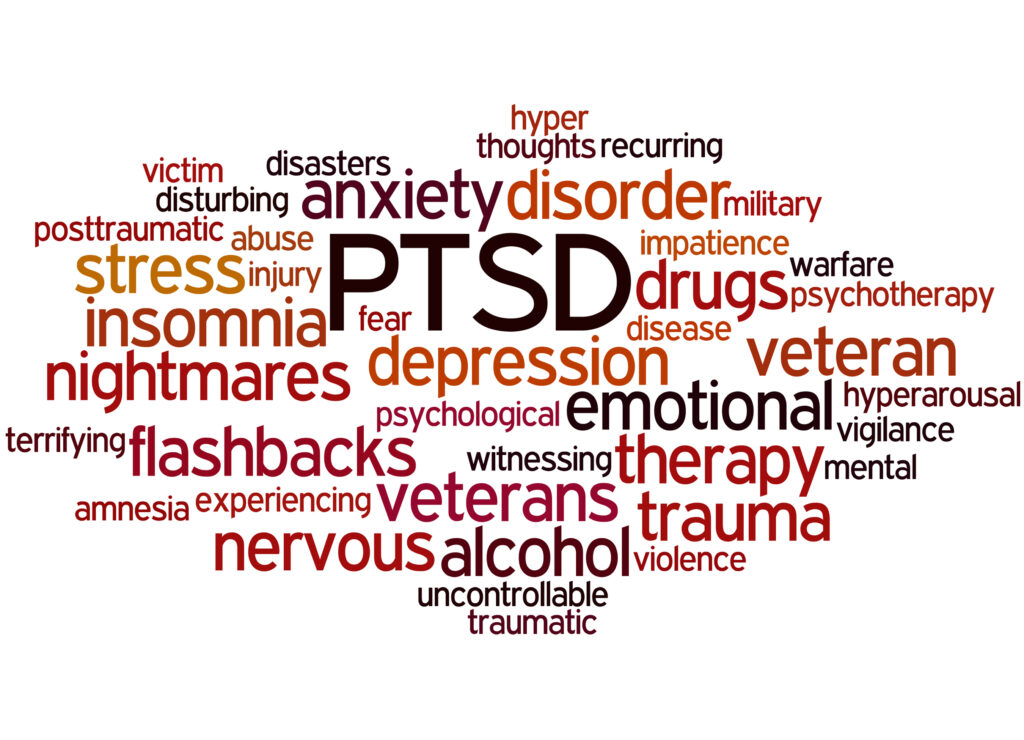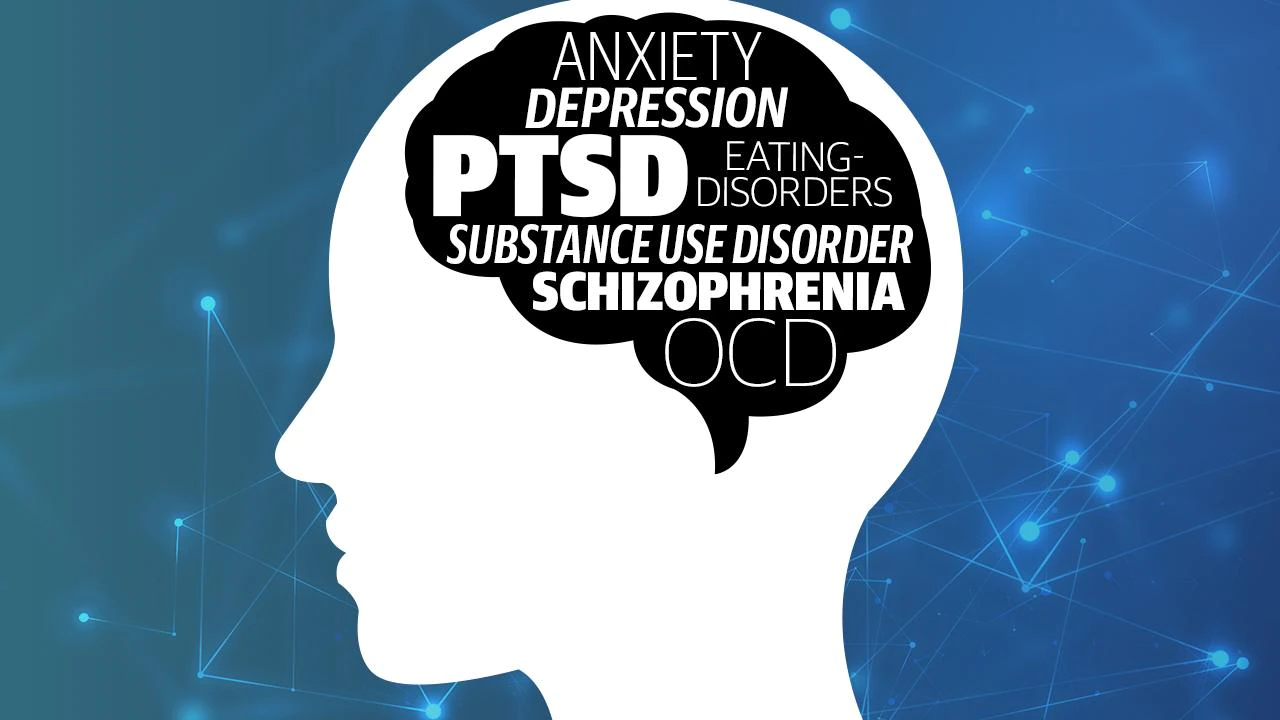PTSD (Post Traumatic Stress Disorder)
P is a type of mental health disorder, that typically occurs when the person experiences a very stressful, frightening, distressing, or life-threatening event. Which include natural disasters, accidents, illness, the sudden death of a loved one, abuse, or assaults.
Facts about PTSD
- About 5.2 million adults suffer from PTSD
- 10% of women developed PTSD at a certain point in life compared to 5% of men.
- 70=80% of people could develop PTSD at some point in their lives.
What is PTSD look like?
A person with Post Traumatic Stress Disorder will:
- Relives the traumatic event through nightmares and flashbacks
- Suffer from anxiety avoidance
- Have bad memory
- Suffer from depression and hopelessness
- Numbness
- The feeling of Guilt and shame
- Insomnia
- Self-destruction
- Lack of focus and sometimes they may experience hallucinations
- Sense of isolation, and relationship problems
Signs and symptoms

Having PTSD symptoms can be unpleasant and upsetting, especially if you don’t understand why, you are having them. PTSD is a reaction to severe trauma. Your quality of life may be greatly impacted and impaired by the ongoing need to avoid the difficult feelings related to certain aspects of the trauma and the intrusion of Post-Traumatic Stress Disorder symptoms.
Some indications that you might have PTSD symptoms include:
- one or more instances of experiencing, seeing, or learning about a violent, damaging, or potentially lethal event.
- Your trauma is present in intrusive, persistent thoughts, memories, and nightmares.
- Moments when you act or feel as though you are reliving a tragic event (also called flashbacks).
- Reactions to memories of your trauma that are emotional, cognitive, or physical.
- Observe that you avoid anything that makes you think about the trauma, including thoughts, memories, feelings, locations, people, or other things.
- Significant shifts in your emotions and ideas, particularly when coupled with altered and pessimistic beliefs about the world, yourself, or others after traumatic situations.
- Having negative self-talk or being unable to experience joy or other pleasant feelings.
- aggressive actions and outbursts or easily irritated and angry feelings.
- Self-harm or irresponsible behavior that starts after a traumatic event.
Details about the 5 types of PTSD
1- Normal stress response
Prior to the onset of PTSD, a normal stress reaction takes place. It does not always result in a full-blown condition, though. This response can result from incidents like car accidents, injuries, diseases, surgeries, and other sources of excessive tension and stress.
With the help of friends, family, and individual or group therapy sessions, a normal stress reaction can usually be effectively handled. Within a few weeks, people who are experiencing a typical stress response should feel better.
The signs of a typical stress reaction include:
- Fear
- Sadness
- Relief
- Anger
- thinking about the traumatic experience a lot
- Anxiety or perspiration
- difficulty paying attention
- abandoning a regular self-care schedule
- Insomnia
- feeling cut off from other people.
After trauma, it can be challenging to experience a normal stress response, but recovery from these symptoms is feasible, especially if you are not actually suffering from Post Traumatic Stress Disorder.
These symptoms are distinct from PTSD symptoms in that they ought to start to go away after a few weeks. By creating effective stress management techniques, we may control our stress reaction and avoid toxic stress.
2- Acute stress disorder
Even though it’s not the same as PTSD, acute stress disorder can happen to those who have experienced anything that is or feels life-threatening. Acute stress disorder can be brought on by a variety of stresses, including natural disasters, the loss of loved ones, job loss, or the possibility of dying.
Acute stress disorder may really progress to PTSD if neglected. Treatment options for acute stress disorder include medication, rigorous programs created by a psychiatrist, individual and group therapy, and group therapy.
PTSD and acute stress disorder are not as dissimilar as they might first appear. After a stressful or traumatic experience, experts will typically diagnose both conditions. They both had the same symptoms and were diagnosed in the same age range.
Despite the fact that both conditions follow a traumatic experience, they differ in the length of time that symptoms last.
A person must have PTSD-like symptoms for at least three days before a therapist can distinguish between an acute stress disorder and post-traumatic stress disorder (PTSD).
Around 30 days in, these symptoms ought to start to fade or end altogether. Let’s assume that these symptoms persist on a regular basis after a month with no improvement.
A full-fledged PTSD diagnosis is then justified in that situation. Acute stress disorder signs were initially identified in around 50% of the population of people diagnosed with PTSD.
3- Uncomplicated PTSD
Uncomplicated PTSD is a disorder that is affected by a single traumatic incident, even though PTSD can be influenced by a number of traumatic experiences or stresses.
The absence of other co-occurring mental health issues like depression or substance misuse signifies uncomplicated PTSD.
Uncomplicated PTSD symptoms include:
- intrusive ideas
- Avoidance Methodologies
- Unsettling Mood Changes
- Modifications to Cognitive Processing
- Delay in Reaction
Example of Post-Traumatic Stress Disorder after a car accident
Following a car accident, simple Post Traumatic Stress Disorder characteristics could include:
- Avoiding the crash site by taking paths that are noticeably longer
- It doesn’t help to drive more slowly because you can’t respond to changes in traffic conditions as quickly.
- When under stress from the surroundings, being easily offended by friends and family
PTSD treatment for simple cases
Cognitive therapy is one form of treatment that may be used to create anxiety-reduction relaxation techniques. Exposure therapy is an additional popular strategy.
This method entails working safely on anxiety response management while being exposed to reminders of the trauma in the therapist’s office.
Increased communication abilities can assist prevent emotional outbursts with close ones by improving how difficult or inexplicable feelings are shared.
Both individual and group therapy are options for this course of treatment. Some psychotropic drugs, either alone or in conjunction with therapy sessions, can target particular distressing PTSD symptoms.
4- Complex PTSD
Complex PTSD (CPTSD), which is thought to be the most severe form, is influenced by several traumatic incidents, including recurrent traumas of the same kind or different ones. People who have CPTSD may exhibit more severe PTSD symptoms as well as a variety of antisocial and violent behavioral changes in their daily life.
The following are a few signs of complex PTSD:
- physical or verbal abuse
- Impetuous actions (sexual and physical, among others)
- severe mood swings
Due to the severity of their symptoms, those with CPTSD sometimes receive an incorrect initial diagnosis since they also meet other behavioral and mood disorder criteria.
Examples of Complex PTSD-related diseases that have been incorrectly diagnosed include
- Borderline Personality Disorder (BPD)
- Impulsive Borderline Personality Disorder (IBPD)
- Antisocial Personality Disorder
- Dissociative Disorders
- Bipolar Disorder
How Does Complex PTSD Appear?
Even after moving out on their own, people who experience many forms of violence from their families occasionally find it difficult to fully escape.
Even after expressing a desire to stop, the abusers may still keep in touch with the child and continue to subject them to emotional abuse because they are still a part of their support systems.
A larger percentage of self-harm-related hospitalizations are experienced by those with complicated Post Traumatic Stress Disorder.
It can be difficult to recognize and understand how complicated trauma affects a person’s sense of self-worth and self-esteem, which can result in impulsivity and negative cognitive patterns.
Finding effective remedies might be difficult due to the extra risk of complex PTSD misdiagnoses, which can result in a heightened stress response when others who are close to them say that they are having a problem.
Treatment for Complex PTSD
treatment consists of the following four steps:
- Work with a psychiatrist to investigate drugs that could lessen agitation, apprehension, and associated depression that can result in self-harm.
- Create a safety plan to protect a person from recurrent trauma, such as forbidding contact with violent family members.
- Make a strong support network to assist them in learning better ways to express their demands without using abusive language.
- To guarantee consistent management of impulsive behaviors, see a therapist sometimes and participate in group therapy sessions once a month.
5-Comorbid PTSD / Chronic Post Traumatic Stress Disorder
Comorbid PTSD is when a person has Post Traumatic Stress Disorder plus additional co-occurring trauma-related disorders that are not included in a PTSD diagnosis. Especially with PTSD, it is normal to have comorbid illnesses when one is diagnosed with a mental disease.
PTSD frequently co-occurs with several disorders, including:
- Substance Use Disorders
- Major Depressive Disorder
- Anxiety Disorders (General Anxiety Disorder or Social Anxiety Disorder)
- Specific Phobias
Treatment for comorbid PTSD
A multidisciplinary care team is needed to manage numerous diagnoses of co-occurring disorders concurrently as part of the treatment for this kind.
Typically, comorbid PTSD illnesses are treated in the following order:
- receiving drug and pills treatment to help them achieve sobriety and engage in one-on-one therapy.
- beginning a long-term exposure therapy program to lessen hypervigilance, anxiety, and rage responses to events that remind one of trauma, such as war and military life.
- processing the unfavorable ideas and assumptions that affect depression symptoms or those of other co-occurring mood disorders through cognitive therapy.
References and resources: NHS, American Psychiatric Association, National Center for PTSD, Mind, WebMD.


Leave a Reply